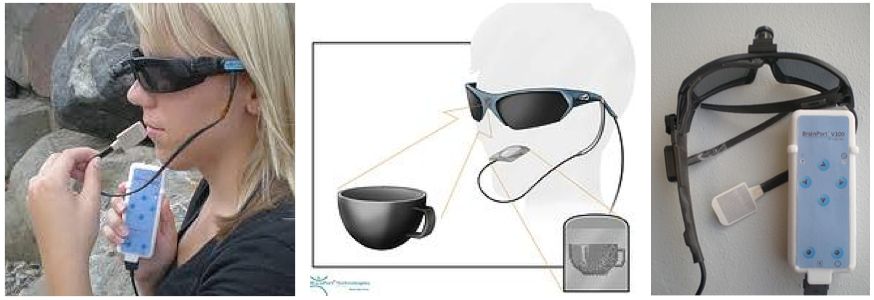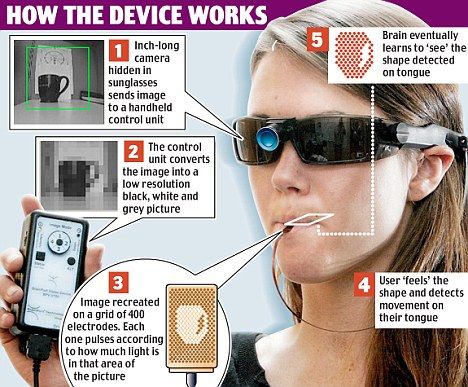Brainport : Alternative Link Between Computer And Brain
Aug 04, 2019 • 20 views
Technology – it’s what makes life easy, these are made for human ease, and to change way of working from “ Hard-work ” to “ Smart-work“ , and also to lighten the dark spots of Human sense.
Recently a tech named “Brainport “was brought up in the market which allows blind person to see and feel the surrounding using the senses present on the person’s tongue. Yeah, you read that correctly, using the tongue the person can locate the things present in his vicinity.

In this developing world in the field of modern science has created a number of crossroads between Neuroscience and Computer Science. BCI’s aim is to provide a direct connection between the human brain and computerized environment. In BCI the flow of information is from brain to computer. While the reverse direction of flow of information (i.e.Computer Brain Interface, CBI) remains almost undeveloped.
Advancement has taken place to its another level as Computer Brain Interface (CBI) is designed in such a way that a direct link from a computerized environment can be supported to brain and this can be done without any surgery or operation.
The Brainport also known as the universal “information port” to the brain, has been a fruitful success of 35 yearsefforts performed by Paul Bach-y-Rita which was based on combined phenomena of sensory substitution and brain plasticity.
The Technical aspect of Brainport :-
The oral unit contains circuitry to convert the controller signals from the base unit into individualized zero to +60 volt mono-phasic pulsed stimuli on the ground tongue display. Using standard photolithographic techniques electroplating processes in a PTFE circuit board on which the gold plated electrodes are present on the inferior surface. This unit will also have a MEMS-based 2-axis accelerometer for tracking head motion during visual image scanning and for vestibular feedback applications. This configuration utilizes the vaulted space above the false palate to place all necessary circuitry to create a highly compact and wearable sub-system that can be fit into individually molded oral retainers for each subject. With this configuration, only a slender 5mm diameter cable protrudes from the corner of the subject’s mouth and connects to the belt-mounted base unit.
Dynamic C++ compiled code executes on Motorola 5249 controller which forms the base unit and the code manages all communication and data processing for pixel-to-vector image conversion. It is user configurable for personalized stimulation iso-intensity mapping, camera zooming and panning, and other features. The unit will has a single removable 512 MB compact flash memory cards on board that can be used to store biometric data from the mobile experiments planned in the latter stage of the research. High speed USB is used for experimental control and programming between the host PC and controller. An internal battery pack supplies the 12 volt power necessary to drive the 150 mW system (base + oral units) for up to 8 hours in continuous use.
The Brain Port uses electrical stimulation through an array of surface electrode to represent quantitative and qualitative information on the upper surface of the tongue .Information regarding real world is represented as pattern with various complexities by the electrodes which can be considered as “electro-tactile screen”. The surface of the tongue is a universally distributed and topographically organized sensory surface, where a number of mechanoreceptors and free nerve endings are present which can be "read" as the contents of ’screen’, which encodes this information and then it is transferred to the brain as a “tactile image. The brain is able to decode the information with no such intensive training and can use it for immediate result. Numerous signal detection and recognition problems are required for better performance.
Hence, enabling a blind person to live his life in a normal way.

